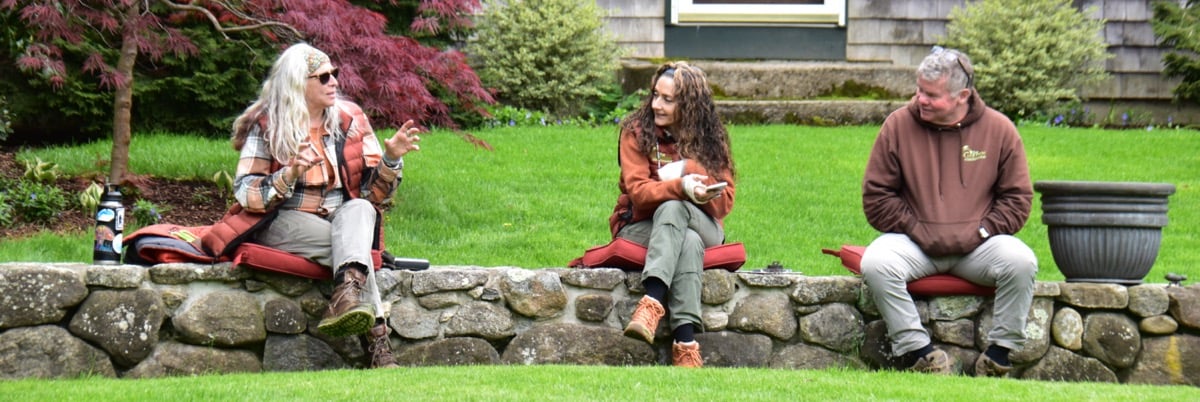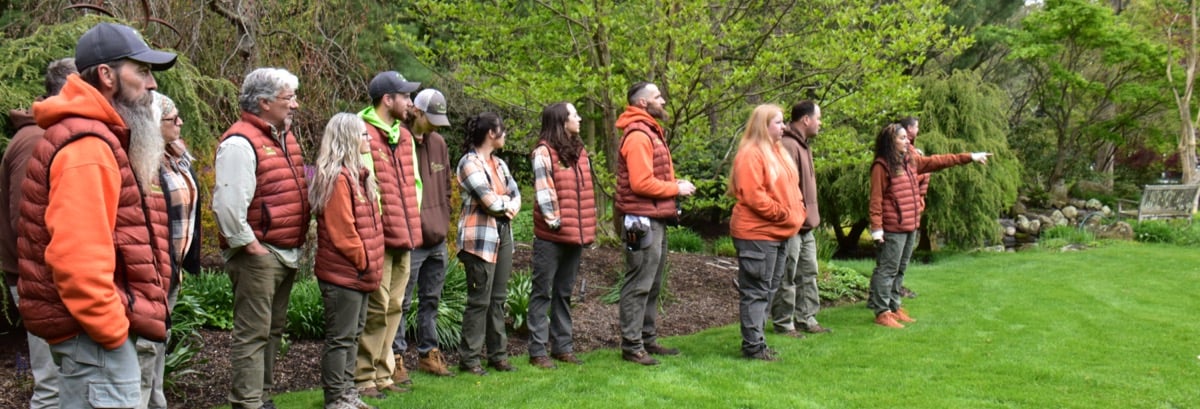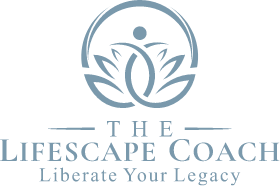Contents
Introduction
At a certain stage in the life of their landscape business, owners will inevitably face the problem of how to achieve their desired amount of growth – and thereby achieve their desired increase in revenue and profits. The landscaping industry is multifaceted; there are many factors that combine to determine how profitable landscape businesses will be. Many landscape business owners lack awareness of how seemingly small elements of their business can have a tremendous impact on revenue.
The obstacles that stand in the way of owners generating more revenue and profit for their landscape business often come down to uncertainty about how to answer the following questions:
-
How much should I charge for my landscape labor? Owners often look for, and struggle to find, a “sweet spot” between paying their employees competitive wages and not cutting too heavily into their profits.
-
Should I be charging for consultation and landscape design? Owners may weigh whether it’s better to get a foot in the door with a client by offering complimentary initial services.
-
How do I make more profit on the landscape projects? The enormous scope of this question can leave owners feeling unsure where to even begin.
-
How much money should I spend on marketing and lead generation for my landscape business? Putting money into marketing can feel like a gamble - especially if you’re not confident that you’re pursuing the right strategy.
-
How do I sell my landscape services to reduce pushback in the sales process? Owners who aren’t self-assured salespeople often feel intimidated by clients and can shy away from the kind of conversations that lead to closing a sale.
-
How do I manage costs to increase profit? This internal debate for owners typically centers on the balance between managing costs and maintaining quality.
-
How much should I pay myself as my business grows? Anyone who’s built a business from the ground up knows how tricky it is to answer this question. An inflated owner’s paycheck can sink a growing business. And at the same time, the owner’s expertise, skill, and time are the top assets behind a successful landscaping business, and can’t be undervalued.
None of these questions are easy to answer, in particular because the answers will be unique to each landscape business. Over the years, we have seen owners who want to grow their landscape business revenue and profits attempt to achieve that growth without realizing that they’re consistently making some common errors.

Download your copy of this eBook by completing this form.

Download now
Four Wrong Ways to Solve the Problem of Increasing Landscape Business Revenue
COPYING
The first error we see landscape business owners make is copying. With no clear idea of where to begin, owners will very often look to their competition and copy their strategy. Worse still is resorting to a general Google search to find out how much you should charge for services.
Pursuing revenue strategy in this way fails because when you look to copy others, you’re failing to take into account your financial burden, your business structure, and all of the things that make your business unique. Other business owners’ growth strategies are tailored to their specific circumstances; yours should be too.

DROPPING
Dropping, or excluding real costs from estimates and invoices, is another critical error we see landscape business owners making that jeopardizes their profits. Typically this stems from a worry that clients (or prospective clients) will find your pricing too high and opt not to contract with you. That worry may drive you to drop the markup on an expensive plant, or decide not to charge for your own time. You may opt not to include fees related to designing and design editing.
Effectively, you’re cheating yourself out of earned revenue every time you drop a cost, and losing profitability. It took us at The Garden Continuum quite a while to learn this lesson, but you can benefit from our experience. Trust us when we say that dropping is the worst thing an owner who wants to increase revenue can do.
MISSING
Many landscape business owners can unwittingly find themselves missing costs that should be included. This is largely the result of a lack of solid systems in place for tracking time and expenses.
If you forget to charge for mulch, for example, you’re still duty-bound to complete mulching for the client, and so that cost has to come out of another revenue source. Other missed costs might involve failing to charge for time spent shopping for plants, or traveling to and from nurseries or job sites. Consider also the amount of time it may take to do off-site staging in order to mobilize for a job, or to clean up afterward. If you’re working from back-of-the-napkin estimates, we can guarantee you’re missing critical elements of job planning that you need to be charging for.
A logical way to put this into context is to think of each landscape project as having a beginning, a middle, and an end. Owners are naturally very good at estimating for the middle portion, but not necessarily the beginning and end portions. Consider whether the costs involved at every stage are reliably making it into your job estimates.

INACTION
And of course, the final wrong way to solve landscape business revenue problems is to remain tethered to inaction. Fear is a powerful motivator. Too many owners remain paralyzed and do nothing because they’re not sure their business can survive a wrong move. But as the old adage has it, if you change nothing, nothing changes. The energy an owner spends anxiously fretting about their profits and revenue is wasted energy that can be put to much better use by taking decisive, well-planned action to increase both.
WHAT’S THE RISK OF FAILING TO SOLVE YOUR REVENUE PROBLEMS?
The obvious answer to this question is that failing to solve these problems means you’re not making enough money. This can go beyond profitability and actually result in a failure even to cover basic expenses. You may find that even though you’ve started landing better jobs or more interesting clients, you still can’t get ahead. It is as though there is a leak in your boat that is impossible to locate. Frantically searching and failing to find it will drive anyone into a stage of emotional burnout. This is usually the state we often meet clients in.

ALTERNATIVE SOLUTIONS
EDUCATIONAL RESOURCES
The Lifescape Coach recommends a few resources that are useful in helping landscape business owners understand how to grow revenue and profits:
Managing By the Numbers: A Commonsense Guide to Understanding and Using Your Company’s Financials (2000) will walk owners through the basics in a way that’s accessible even if you don’t have a background in finance or accounting.
Profit First: Transform Your Business from a Cash-Eating Monster to a Money-Making Machine (2014) explains the relationship between sales and expenses.
The Lifescape Coach’s own Landscapers Freedom Formula (2016) is a four-module course that explores the four main pillars of building a business: business mindset, business services, sales strategy, and building teams.
Owners who may not be ready to begin working with a coach should at least take steps to educate themselves using these and other resources.
PERSONNEL RESOURCES
Hiring additional personnel to help achieve desired revenue is always a possibility, whether it be in-house or with a contracted service provider. Having another set of eyes on the business is always valuable in helping to identify problems. Unfortunately, these personnel typically can’t help in identifying solutions to those problems.
Financial personnel may also have a difficult time appreciating the idiosyncrasies of seasonal businesses like landscape development and maintenance and how it is managed. This means their recommendations are not always well-suited to the realities of your business cycle.
Oftentimes, the financial personnel you bring in may just not have a broad enough lens to find the right solution for your business. Once, a financial professional told me that my payroll was 20% higher than the industry average, and therefore made the recommendation for me to reduce payroll in order to grow profits. That professional did not understand how important it is to me to have better and happier employees on my staff. Because their recommendation did not place appropriate emphasis on the values that are integral to my way of doing business, it was ineffective in solving my issue.

ORGANIZATIONAL & INDUSTRY RESOURCES
Organizations like the Small Business Administration or SCORE can provide mentorship and resources for small-business owners in a variety of industries. Finding the support that matches up best with your particular challenges, however, can take some time and effort.
Involving yourself in professional associations and keeping current with trade publications is always a good strategy, and owners can learn a lot that way. The challenge is that the best and most relevant learning comes from staying highly engaged–attending meetings and events, reading articles, and then taking the time to fully implement your learning. This approach can be helpful for owners with a great deal of willpower and personal accountability.

WHY USE THE LIFESCAPE COACH?
We at The Lifescape Coach are confident in our ability to help landscape business owners achieve growth and increase their profitability. But prospective clients should know that we do not believe that pure financial profit is a reason to be in business. We consistently proclaim our belief in a triple bottom line: planet, people, AND profit.
If you are uninterested in the triple bottom line, then the Lifescape Coach will not be a good fit to work with your business. If you are filled with meaning and purpose and want to do good through your business, then our values and approaches will align.
Owners who share a belief in the triple bottom line are often the ones who have the most challenges around increasing profitability. What I like to call “heart-centered” entrepreneurs can experience guilt and angst over prioritizing money in any context. They may be altruistic to the point of believing that making too much money is bad. This is a limiting belief that keeps amazing entrepreneurs from experiencing wealth.
With all this in mind, here is how we begin to answer the seven questions posed above to help landscape business owners grow their revenue and profits:
1. How much should I charge for my landscape labor?
Don’t copy what your competitors are doing, and definitely don’t make it up! Start by getting to know the financials of your business and what it costs to run it. Determine your desired profitability. This requires you to know the cost of the staffing component of your business operations.

2. Should I be charging for consultation and landscape design?
Yes! You hold a treasure trove of knowledge in your head, which has a value to your client and to your business. That knowledge mixed with your perspective and experience is what differentiates you in the marketplace. The act of charging for this service helps the client appreciate the value of your work and be more inclined to follow your advice.
3. How do I make more profit on the landscape projects?
Now that you know your labor costs, you need to understand the difference between variable costs and fixed costs. More precisely, you need a differential between the cost of goods sold and your business expenses. Once you know this, you can determine your desired profit and build more precision into your estimates regarding materials and overhead costs.
4. How much money should I spend on marketing and lead generation for my landscape business?
Your marketing costs should be reclassified as an investment, because most consumers search online for services. Determining the right investment percentage will depend on whether your business is in growth mode or already established.
5. How do I sell my landscape services to reduce pushback in the sales process?
Create clear service offerings that show the features and benefits of adopting that service. Help the client imagine a desired outcome and map services to create that outcome. The second offering in the Landscapers’ Freedom Formula series is a great tool for this.

6. How do I manage costs to increase profit?
Start by reviewing your Profit & Loss statement each month so you can see where the money is going. Next, research all options for bulk buying of materials, as well as early ordering, to see what discounts you can take advantage of. Go through your inventory before you buy new to determine what’s saleable and what needs to be offloaded to make room.
The ultimate goal is to implement standard operating procedures that will help you and your team run each day efficiently from the start to the end of the day. A time-tracking system will help you to maximize billable hours.
7. How much should I pay myself as my business grows?
Pay yourself first. Pay yourself for the position you hold. You cannot do either of these two things if you do not know what you do in the company. Understand your role. Decide what you want to do and what you want to outsource.
COACHING SOLUTIONS
Ultimately, there is no quick fix for achieving growth, increased revenue, and more profitability. We landscapers know that the fastest-growing trees are also the most brittle; slow, measured, grounded growth is what leads to stability and sustainability.
To extend the tree metaphor, it’s important when pursuing a landscape business coach to understand that coach’s roots. What is their area of expertise? What market niche do they occupy? What values and priorities drive their work?
Our goal at the Lifescape Coach is to help people build a high-integrity business so that they can live a rich life. If that aligns with your needs and beliefs, consider the following unique coaching solutions we’ve designed to address the needs of landscape business owners.

PRIVATE LIBERATION BUSINESS COACHING
Private Liberation Business Coaching is aimed at owners who are looking for an accountability partner to work in lockstep with over an extended period of time. Clients have the option to set up a weekly or bi-weekly schedule to begin, and can eventually move to monthly meetings. In between, you are able to access your coach as a lifeline to tease out pressing issues.
RAPID RELIEF PROJECT COACHING
Rapid Relief Project Coaching is an intensive, time-limited coaching program for clients with an immediate, critical problem to solve. This model of coaching involves five meetings over a period of five to seven weeks. In between meetings, clients must be willing to engage in assigned “homework” and spend five or more hours each week working on the issue at hand. Rapid Relief Coaching requires a strong commitment to the process and implementation, but represents less of a financial commitment than ongoing private coaching.
REGENERATIVE BUSINESS COMMUNITY
Our Regenerative Business Community is an invitation-only group coaching program designed to give clients access to a dynamic group of specialists to demystify elements of business ownership.
Group sessions may include guest speakers, or masterminding sessions where a participant can present a problem and other members can cross-pollinate ideas to solve it. A confidentiality agreement is required to ensure that participants do not share information that is revealed during group sessions. The Lifescape Coach typically opens a group cohort twice per year.
ONLINE CLASSES FOR LANDSCAPE BUSINESS OWNERS
The Lifescape Coach has developed online resources for immediate access: The Landscaper’s Freedom Formula, and The Landscape Business Owner’s Survival Guide. These resources are offered at an accessible price point giving owners access to tools that will help them master the basics of building and growing a landscape businesses, including:
- Entrepreneurial mindset
- Clarity of service offerings
- Sales strategy
- Team building
- Cash Flow
SPEAKING PROGRAM
Our Speaking Program has been designed to address the fact that every landscape company has its own unique culture and will therefore have its own developmental gaps. We begin with an intake to understand the desired learning outcomes and modify our program to address those specific goals.
Past speaking engagements have focused on team building, service development, sales strategy, fine gardening, garden ecology, and regenerative design. Sessions can be tailored to the specific needs of each client’s business or organization.

TO LEARN MORE
Download our eBook, 25 Signs Your Landscape Business Needs Developmental Coaching
Request a Business Discovery Session by clicking the Get Started button on our website.
Online classes are available in our online store.
Download your copy of this eBook by completing this form.



